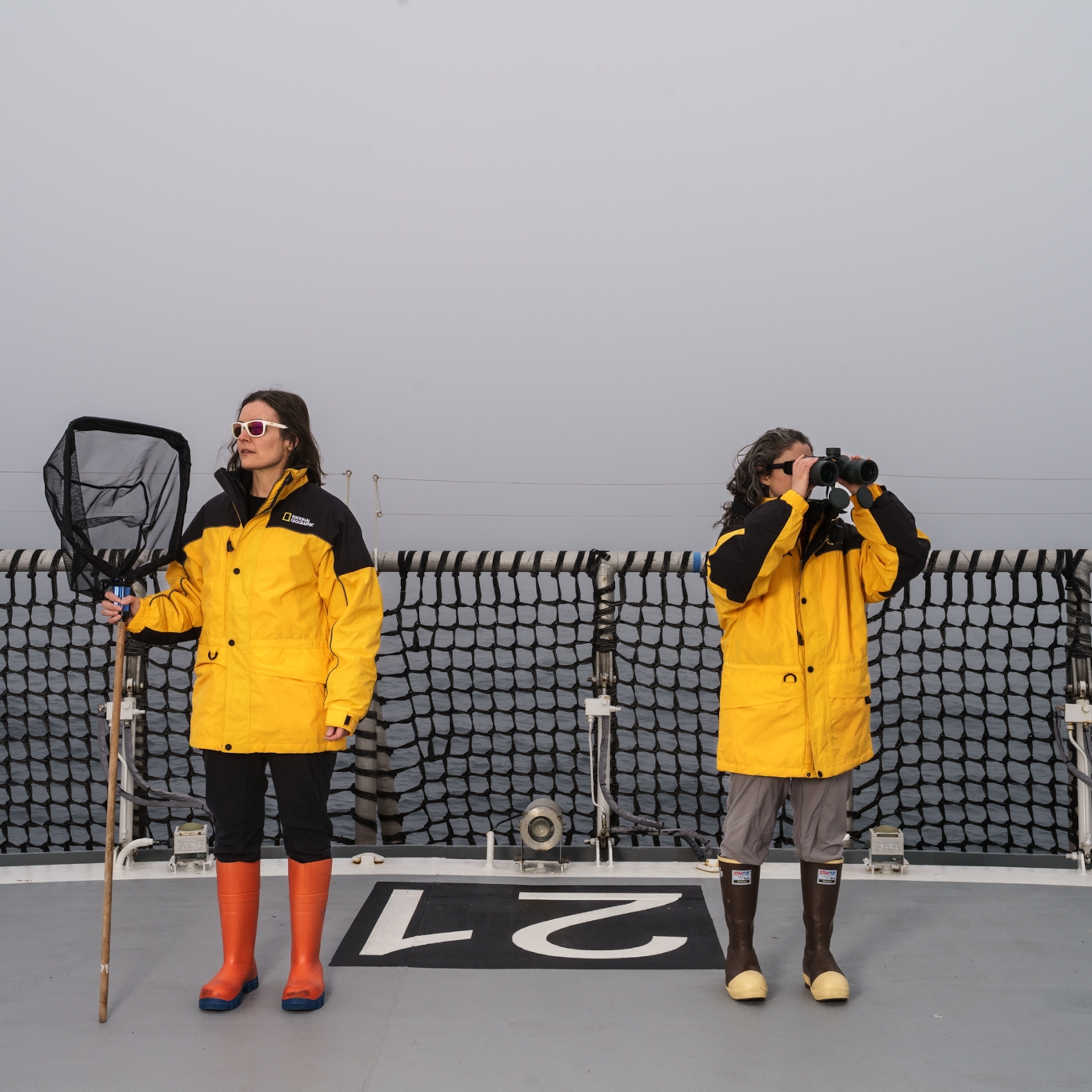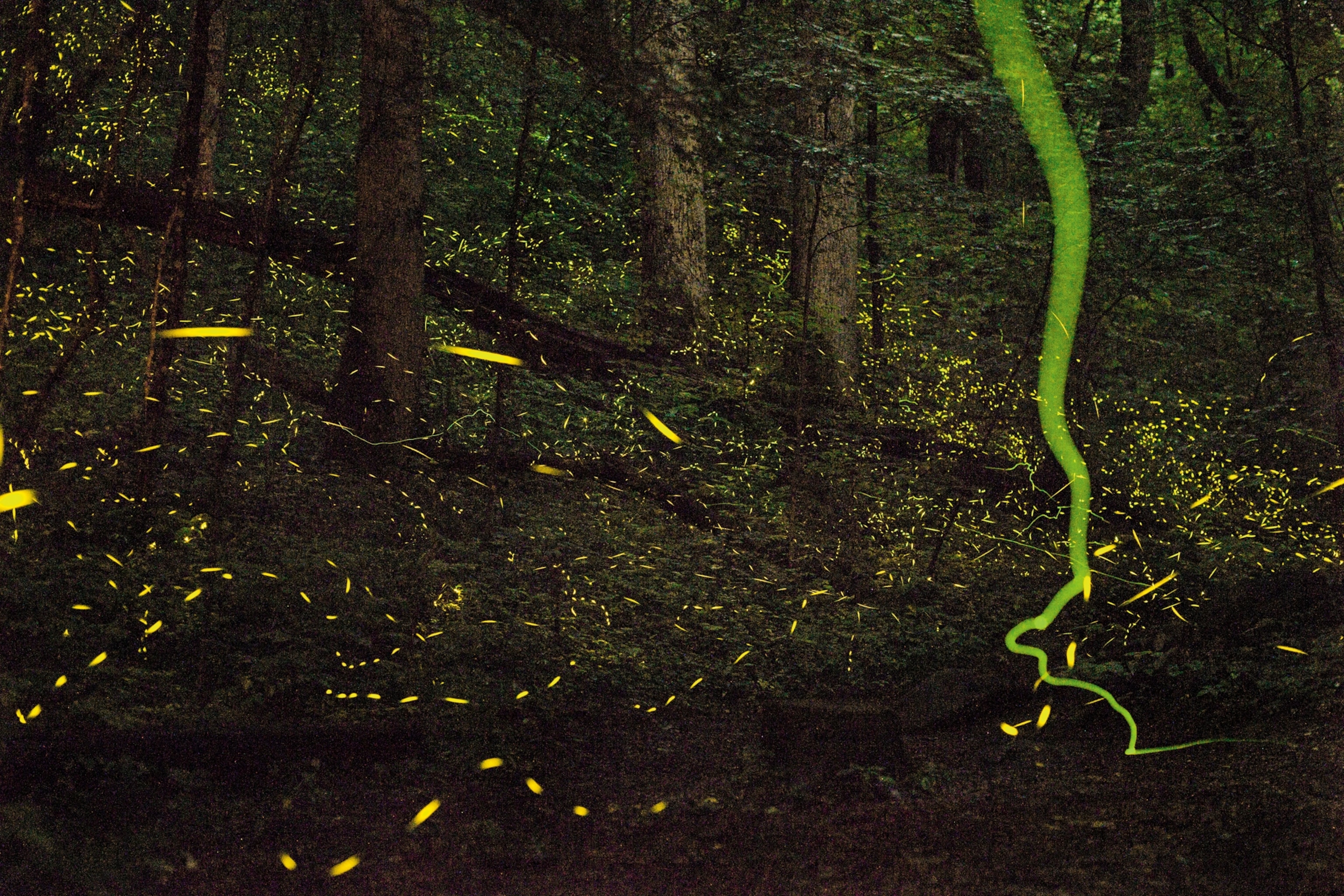
Luminous Life
Among the most abundant sources of light on Earth is life itself.
Watch. Steven Haddock, one of the world experts on life-forms that make light, is about to nudge the animal with a glass stick. We all lean forward, jostling each other to see. There. For a moment, a ghostly image of the ctenophore appears in the dish. An image made of bluish light that swirls and gradually dissipates, as if the animal itself has just dissolved.
It is gorgeous. Ethereal. And, in a way, secret. For this particular ctenophore lives far below the surface of the sea, and few humans have ever seen its kind, let alone its light.
The ability to make light—bioluminescence—is both commonplace and magical. Magical, because of its glimmering, captivating beauty. Commonplace, because many life-forms can do it. On land the most familiar examples are fireflies, flashing to attract mates on a warm summer night. But there are other luminous landlubbers, including glowworms, a snail, some millipedes, and—you are not hallucinating—certain mushrooms.
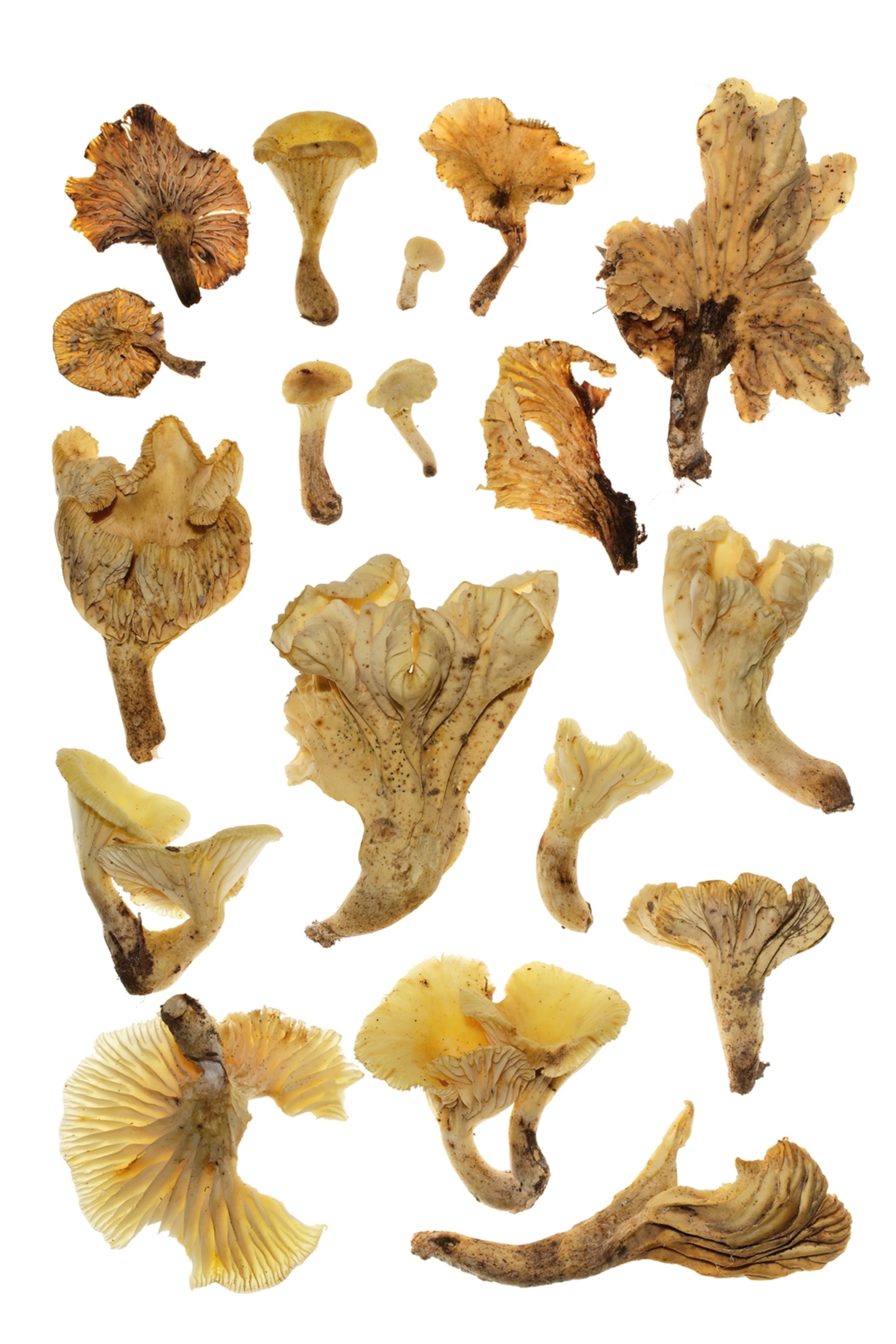
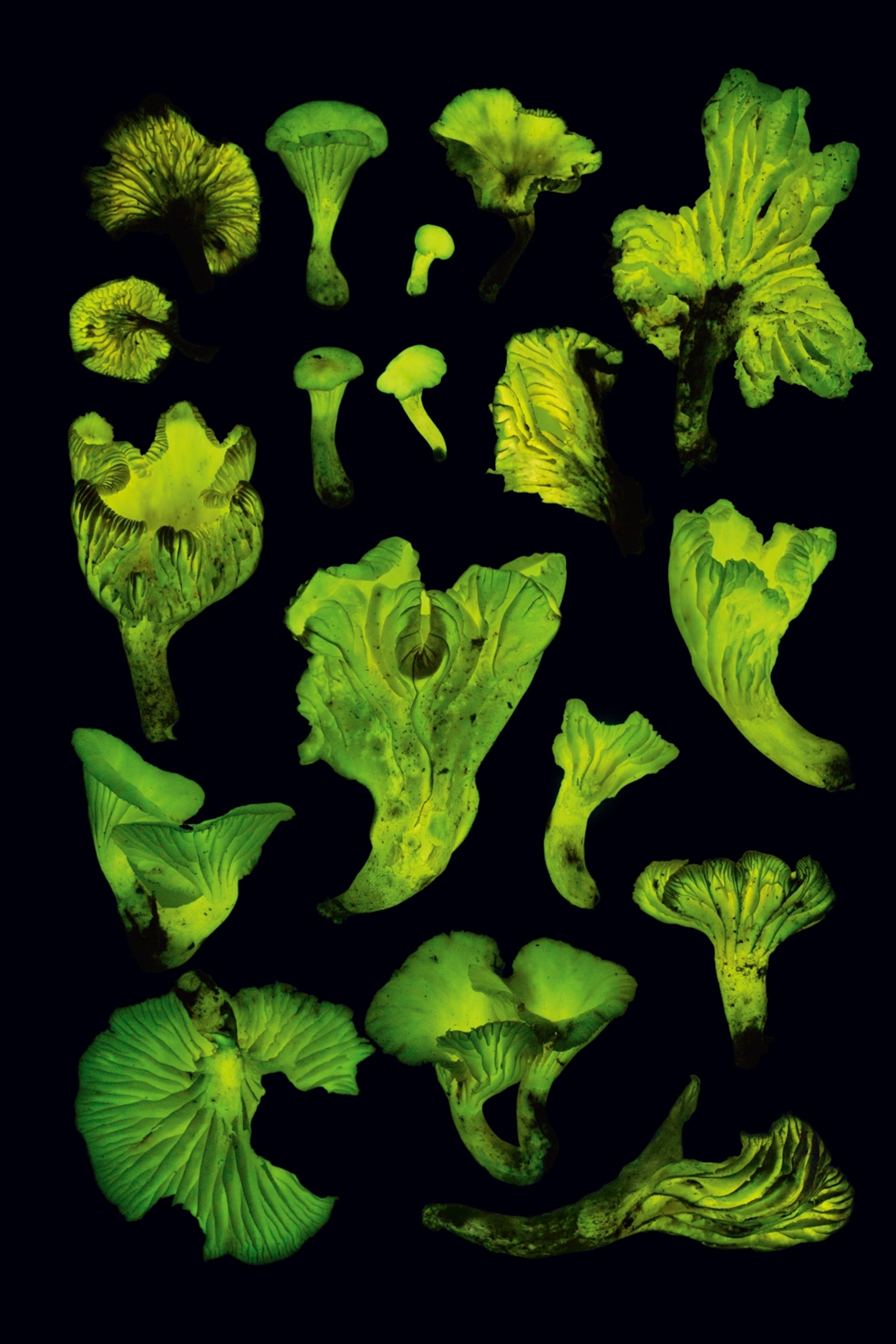
But the real light show takes place in the sea. Here an astonishing array of beings can make light. Such as ostracods—tiny animals that look like sesame seeds with legs—flashing to attract mates, like seafaring fireflies. Or dinoflagellates—speck-of-dust-size beings named for their two whiplike flagella and the whirling motion they make (dinos means “whirling” in Greek). Dinoflagellates light up whenever the water around them moves; they are the critters typically responsible for the sparks and trails of light you sometimes see when swimming or boating on a dark night.
Then there are lightmaking fish, squid, jellyfish, shrimp, the aforementioned ctenophores, several types of worms, and sea cucumbers. There are luminous siphonophores—sinister, stringlike predators with long, stinging tentacles that hang down like a curtain. And there are luminous radiolarians—amoeboid beings that typically live in colonies built on exquisite glass scaffolds. Not to mention glowing bacteria. Indeed, of all the groups of organisms known to make light, more than four-fifths live in the ocean.
So what is it about the ocean? That’s what I’ve come aboard the Western Flyer to find out.
The largest habitat on the planet by far, the ocean covers more than seven-tenths of the globe and has an average depth of about 12,000 feet. Because of its alien and—to humans—inhospitable nature, it remains relatively unexplored, especially the vast expanses that are neither rich fishing grounds, nor coral reefs, nor fashionable research spots such as deep-sea vents.
It is these vast expanses that interest Haddock, the leader of the expedition. “I want to look where no one else does,” he tells me. On previous expeditions, he and his colleagues have been the first to find and describe a number of luminous species. Among the most famous are the “green bombers,” deep-sea swimming worms that throw sacs of bright green light—“bombs”—when under attack.
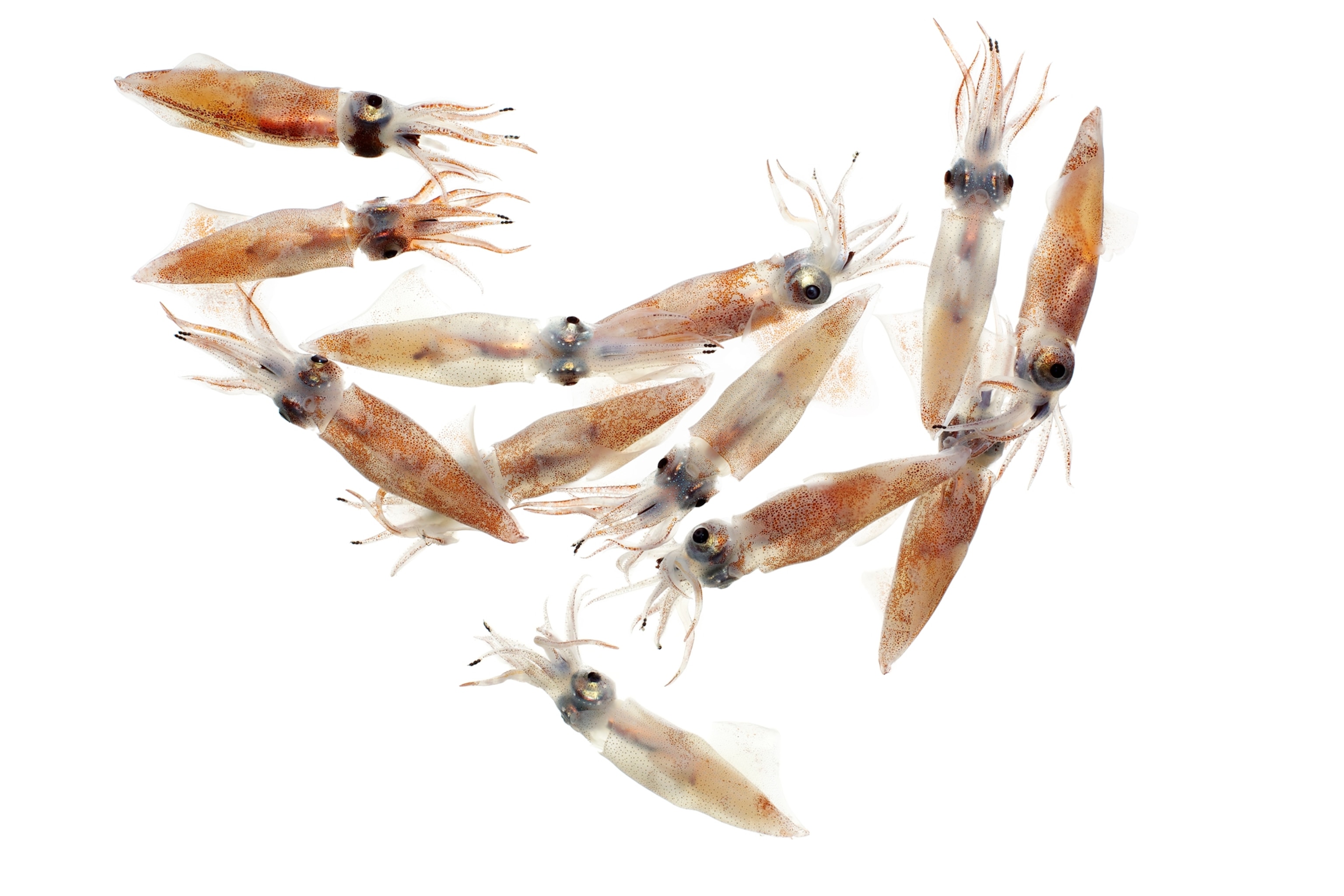

To explore the deeper regions of the ocean, Haddock and his colleagues use a remotely operated vehicle, or ROV. Capable of capturing slow-moving animals and bringing them back alive, it has a stout metal frame decked out with video cameras, lights, sensors, and cables, as well as a couple of robotic arms, a set of clear plastic buckets with lids at both ends, and a plain old kitchen spatula. Kitchen spatula?
“What’s that for?” I say, pointing.
“Digging in the ocean floor,” says Haddock.
It’s 7 a.m., and the ROV is about to launch. Men in hard hats scurry about, making final checks. Then an enormous metal arm lifts the ROV off the floor of the boat. Next the floor where it had been sitting folds open, revealing a square of ocean several feet below. The metal arm lowers the ROV into the water; a moment later, the vehicle disappears beneath the waves.
As a place to live, the ocean has a couple of peculiarities. The first is that in most of it, there is nowhere to hide. This means invisibility is at a premium. The second odd thing is that as you descend, the sunlight disappears. First red light is absorbed. Then the yellow and green parts of the spectrum disappear, leaving just the blue. By 700 feet deep, the ocean has become a kind of perpetual twilight, and by 2,000 feet, the blue fades out too. This means that most of the ocean is pitch-dark. All day, all night. Together these factors make light uniquely useful as a weapon—or a veil.
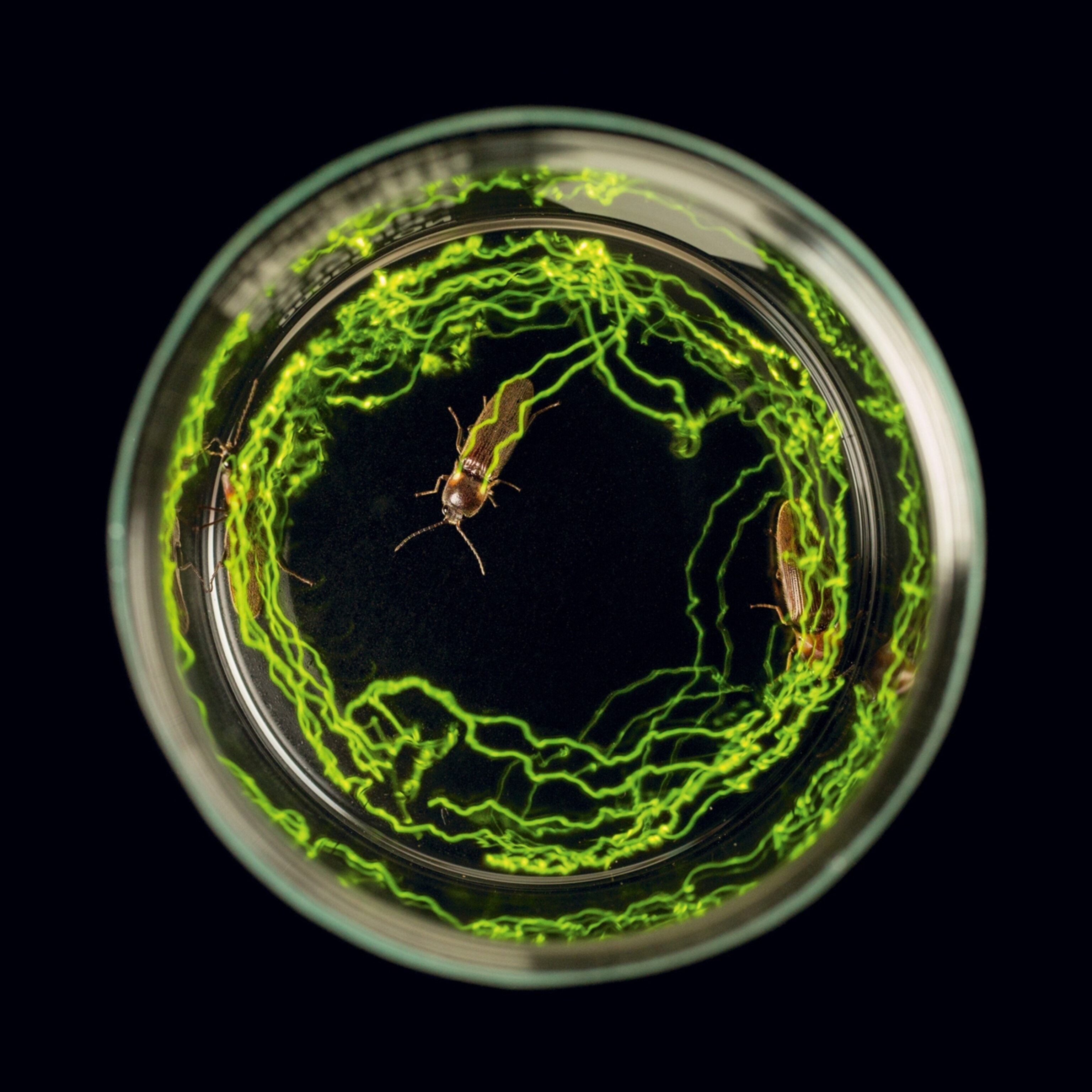
Consider the problem of invisibility. In the upper layers of the ocean—the part where light penetrates—any life-form that does not manage, somehow, to blend in with the water is in danger of being spotted by a predator—especially a predator swimming beneath, looking up.
To get a sense of this, imagine that you’re scuba diving in the middle of the Pacific. Above you, the place where the sea meets the sky looks silver. Below you, the water shades into a dark blue. In all other directions, it is a murky greenish gray. The seafloor, though you can’t see it, is a vertiginous 11,000-plus feet below you. And wait—what’s that shadow down there? Is it a shark? All of a sudden you become aware of how vulnerable you are: a great dark silhouette against the silvery surface, visible to any hungry animal that might be swimming about below.
Many life-forms solve this problem by not being there at all. They avoid the light zone during the day, rising toward the surface only at night. Many others solve it by evolving into transparent, ghosty creatures. On the dive, the first thing you’d notice is that nearly all the life-forms you meet, from jellyfish to swimming snails, are see-through. In another approach, some fish—think sardines—dissolve their silhouettes by having silvery sides. The silver functions as a mirror and allows the animal to blend in by reflecting the water around it.
And some creatures—such as the shrimp Sergestes similis, certain fish, and many squid—use light. How? By illuminating their bellies so as to match the light coming down from above. This allows the animals to mask their silhouettes, donning a kind of invisibility cloak. The cloak can be turned on and off at will—and even has a dimmer switch. S. similis, for example, can alter how much light it gives off depending on the brightness of the water around it. If a cloud passes overhead, briefly blocking the light, the shrimp will dim itself accordingly.
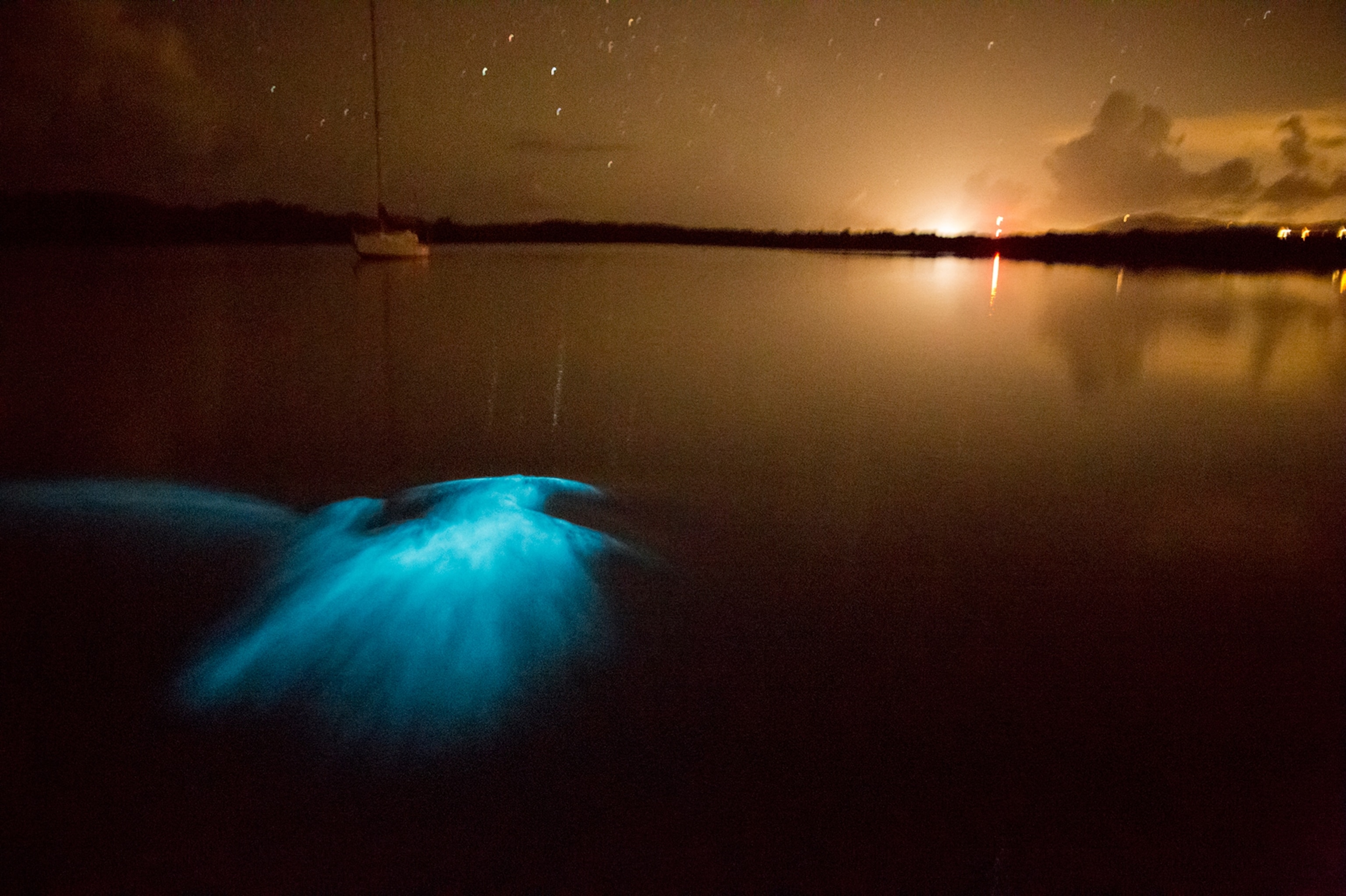
But if the aim is to remain invisible, why do so many creatures, from ctenophores to dinoflagellates, light up when they are touched or when the water nearby is disturbed? A couple of reasons. First, a sudden burst of light may startle a predator, giving the prey a chance to escape. A deep-sea squid, for example, can give a big squirt of light before darting off into the gloom. The green bombers can throw their light grenades, and then disappear into the darkness while the predator is distracted by the light. The ctenophore can vanish while the predator lunges at its ghost.
Second, on the principle of the enemy of my enemy is my friend, giving off light may serve to summon the predator of the predator. Known as the “burglar alarm” effect, this may be especially important for tiny life-forms, such as dinoflagellates, that cannot swim fast: For such extremely small beings, water is too viscous to allow a quick getaway. (It would be as if you were trying to swim through molasses.) The chief defense for these creatures is not fight or flight—but light.
Their flashes summon fish, which hang out in the water, waiting. And when little shrimplike critters (eaters of dinoflagellates) disturb the water, causing the dinoflagellates to light up, the fish are better able to spot, and eat, the shrimp.
When light-up-on-disturbance life-forms occur in large numbers—as they sometimes do—moving through them can be like traveling through a minefield of light. A fish moving fast lights up like a shooting star; a boat creates a bright, glowing wake. Any creature that doesn’t want to be spotted would do better to avoid the area altogether. Thus, even in the deepest, darkest seas there’s an art to remaining hidden. Indeed, most deep-sea animals have evolved to be black or red, to stay out of sight if a burglar alarm goes off. These colors also hide them from the searchlights of deep-sea hunters, scanning the darkness for prey. Although most bioluminescence is blue or green, some of these hunters, such as the loose-jaw dragonfish, use red light, which most deep-sea animals can’t see.


The ROV is operated from a windowless control room, with banks of screens facing a row of seats ripped out of an old airplane. Watching the screens is strangely hypnotic. The cameras are high-definition and very clear—so you can see creatures that are truly tiny, and in astonishing detail. But most of the time all you see is “marine snow”—particles of gunk gradually sinking through the water. In the lights of the vehicle, this looks like dust.
Every so often, however, an animal appears. Perhaps a jellyfish. Or perhaps a small shrimp. Or—wait! Wow! I almost choked on my coffee. A fish has just appeared on the screen, one I’ve read about but never seen. For the most part, it looks like a regular fish. But attached to its head, it has a long stalk and at the end of the stalk, what looks like a fat, juicy, glowing worm. But the worm is not a worm. It’s part of the fish, which uses the “worm” as bait, tempting the incautious and the hungry to their doom. This is an anglerfish, one of the most voracious predators of the deep. Unlike, say, sharks, which chase down their victims, anglerfish are ambush predators, enticing prey close by means of the glowing lure, then pouncing. (Lures work because, thanks to the burglar alarm effect, many creatures interpret light to mean food.)
In this case, the fish doesn’t make the light itself. Instead, luminous bacteria, which live within the lure, do the glowing. It’s of mutual benefit: The bacteria get shelter, the fish gets light. A similar arrangement is found in a few other groups, but it is rare. Most luminous life-forms make their own light.
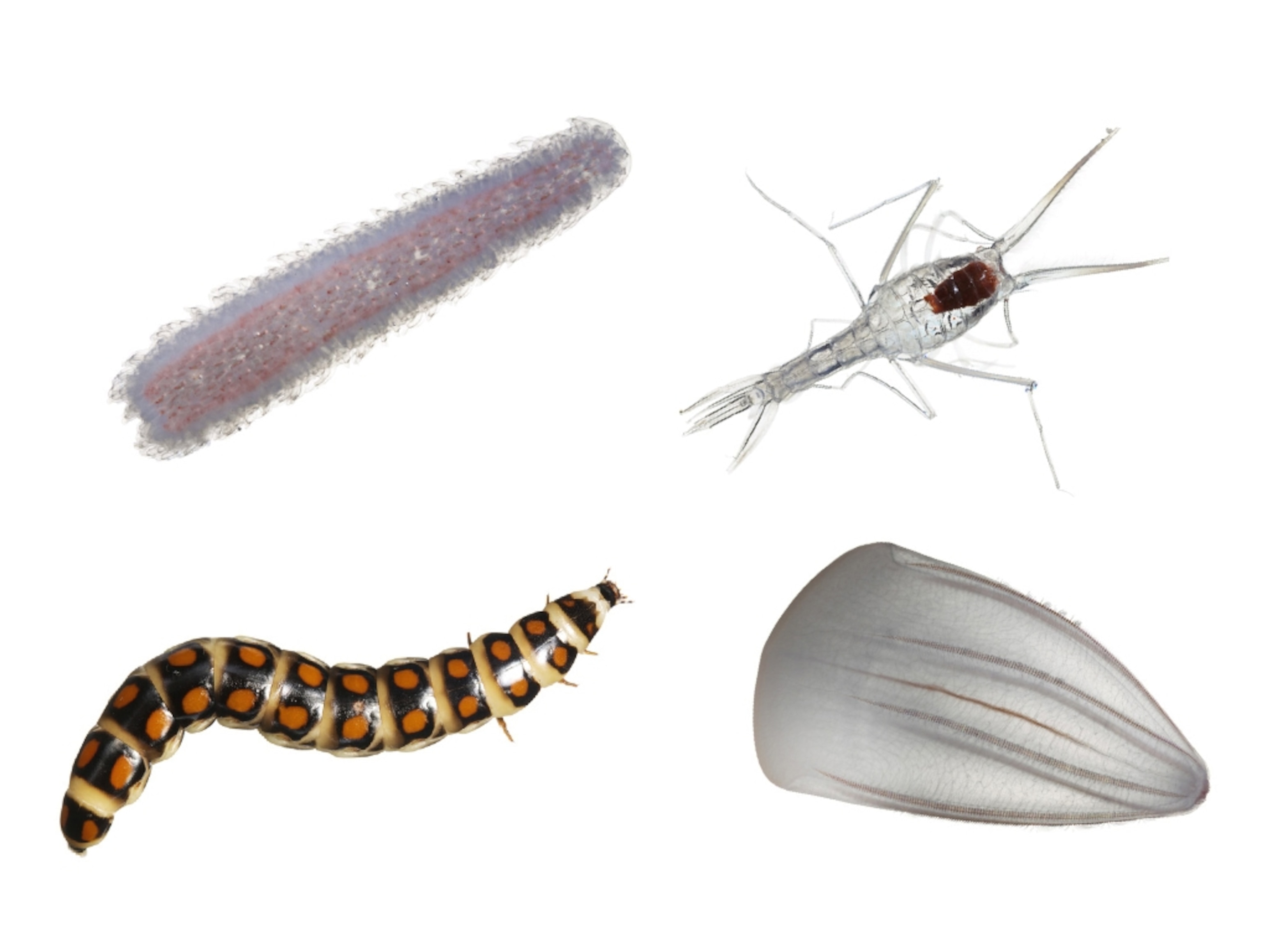
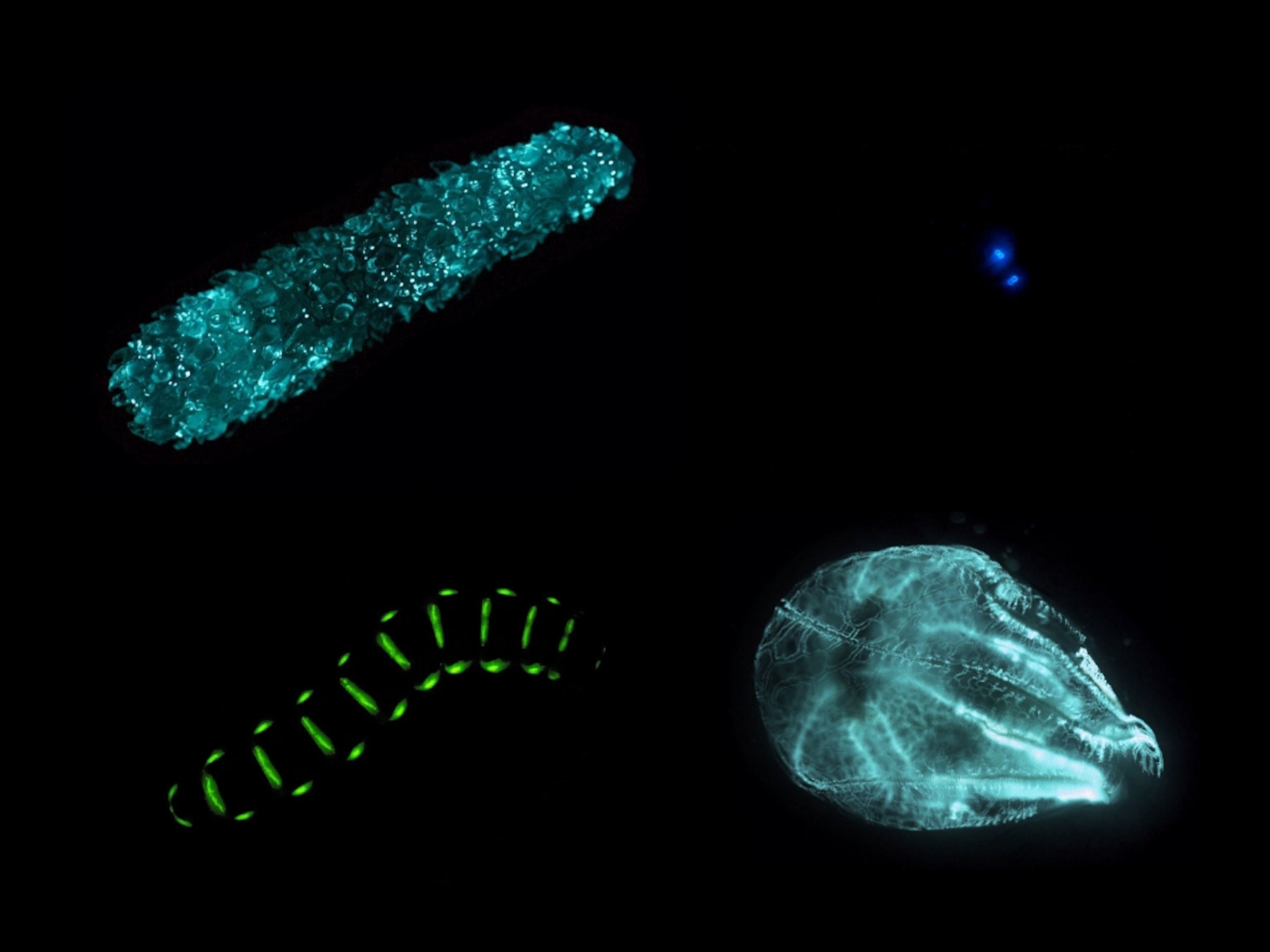
To make light, you need three ingredients: oxygen, a luciferin, and a luciferase. A luciferin is any molecule that reacts with oxygen and in doing so emits energy in the form of a photon—a flash of light. A luciferase is a molecule that triggers the reaction between oxygen and the luciferin. In other words, the luciferin is the molecule that lights up, while the luciferase is what makes it happen. (In English, Lucifer is a name for Satan before his fall from heaven; in Latin it means “bringer of light.”)
Evolving to make light seems to be relatively easy—it has happened independently in at least 40 different lineages. Perhaps that’s not surprising: The ingredients are usually not hard to come by. Plenty of substances can act as a luciferase. Stand in the dark, mix egg white with oxygen and a luciferin from, say, a jellyfish, and you’ll probably get a flicker of blue light. Moreover, in the ocean, only those life-forms at the bottom of the food chain must make luciferins. Everyone else can, in principle, get them from diet: Thus, as humans get vitamin C from eating oranges, some marine animals get luciferins from eating a luminous lunch. Which suggests the following possibility: Luminous life is more common in the ocean in part because the ingredients are easier to get.
Speaking of luminous lunch, here’s a weird problem. As I mentioned, many animals that live in the open ocean have evolved to be transparent, because this makes them harder to see. But if you are transparent and you eat something glowing, all of a sudden—oops—you are highly visible. Which is why so many otherwise see-through animals have guts that are opaque.
As the ROV resurfaces, people start to hurry about. Any animals that have been captured are rushed into cool rooms, so that they remain comfortable while waiting to be examined. And once again, it’s 10 p.m., and I’m standing in the darkroom. On a table, in a small dish, is another example of living luminosity …
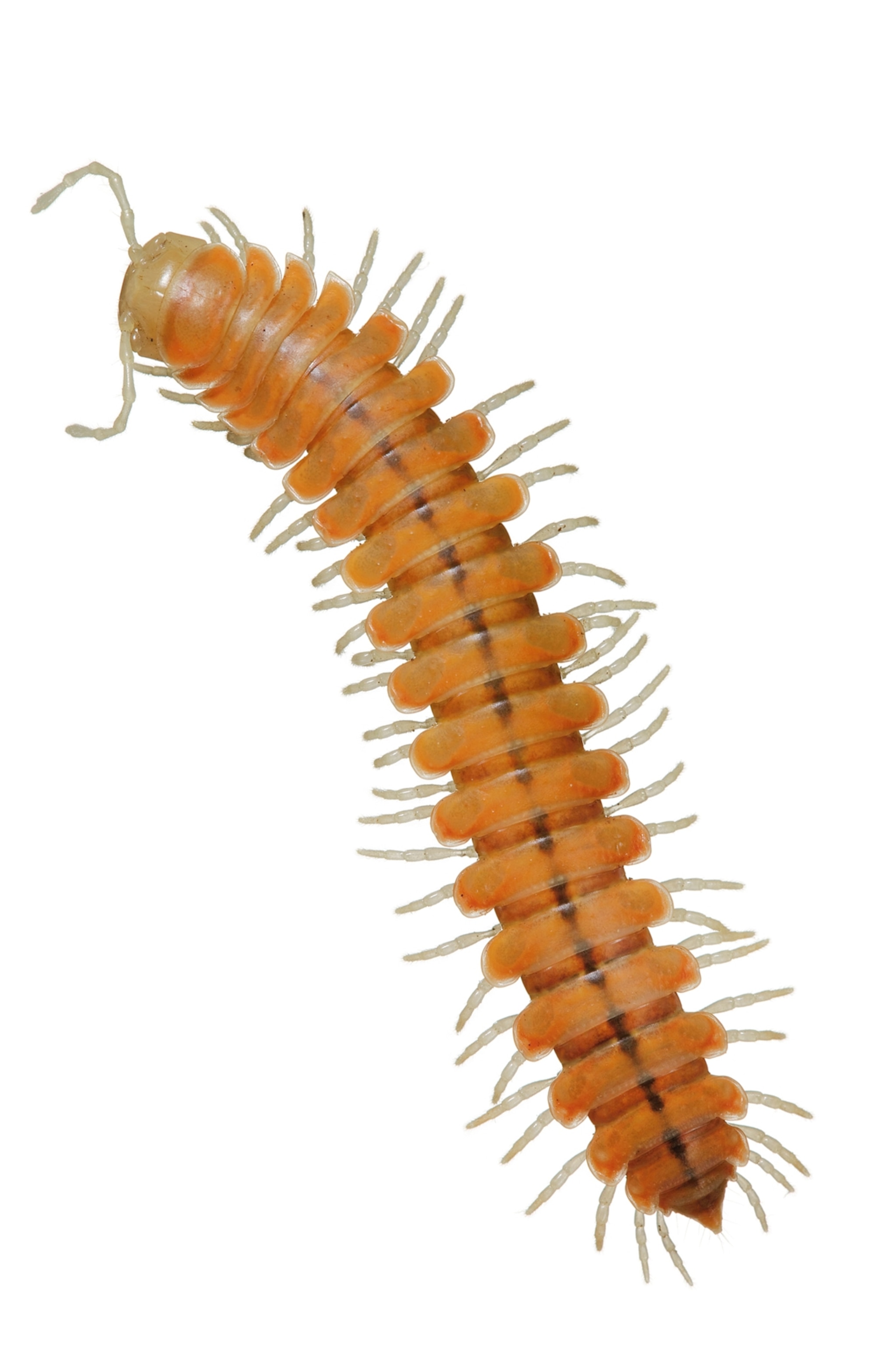
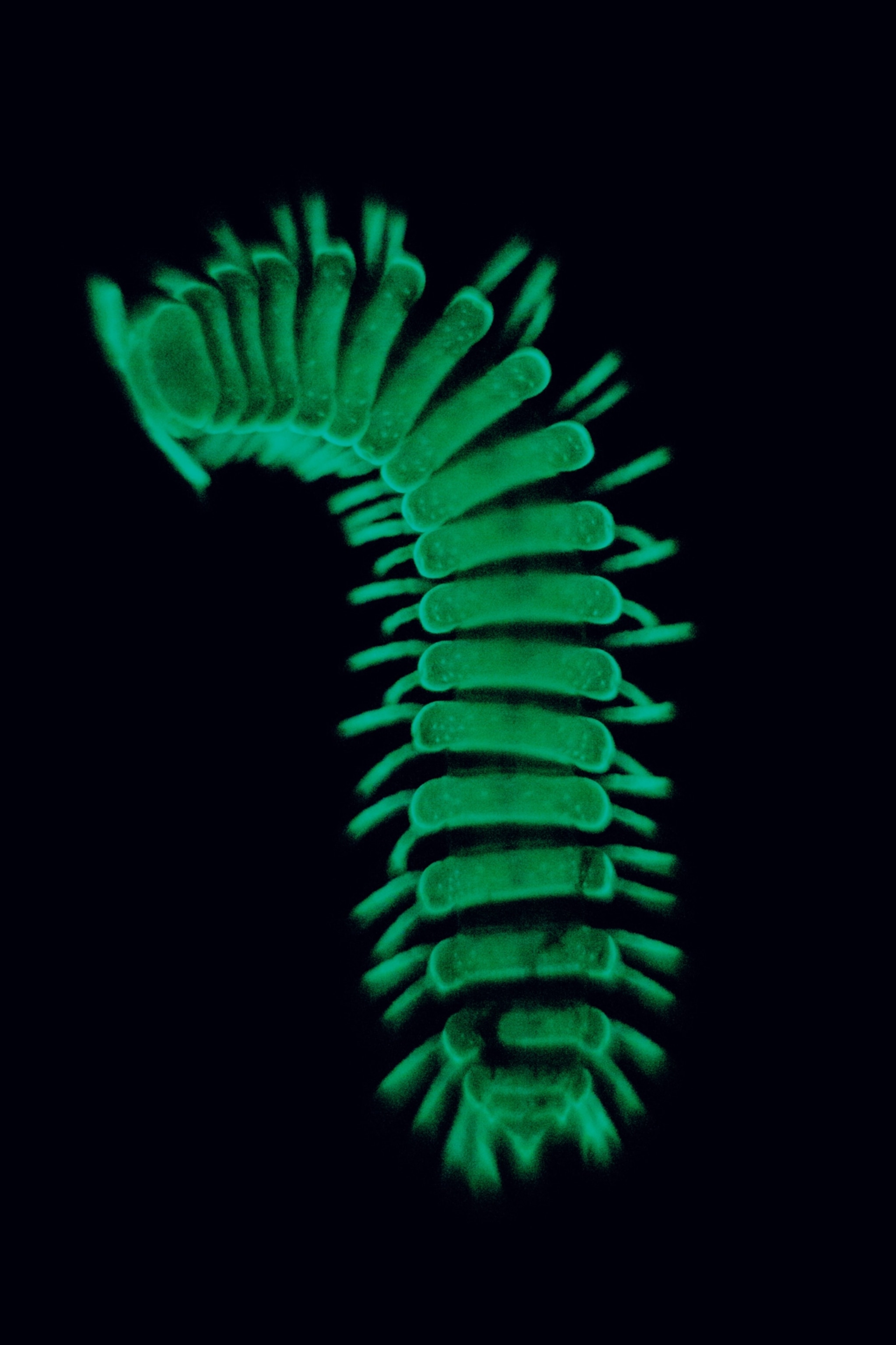
Several months after the voyage on the Western Flyer, I visited Vieques, a small island that belongs to Puerto Rico. The island is famous for its bahía bioluminiscente, or “bio bay”—a flask-shaped inlet that is home to countless dinoflagellates, those speck-of-dust-size beings that light up when the water is disturbed.
The night is dark. The moon has not yet risen, and the island has just a smattering of streetlights, so the sky is full of stars. I am sitting in a transparent canoe, here as part of a tour—one of several tonight. Our group has eight canoes, two people in each; I’m sharing mine with a lawyer from Washington. We’re “parked” in the middle of the bay, looking at the dark sea and the starry sky, and listening to the guide explain the challenges the place faces—increasing numbers of tourists, and rising light pollution as more houses and roads get built on the island. Although there are few streetlights now, their impact is noticeable: The edge of the bay away from the lights is visibly darker, the flashes from the dinoflagellates visibly brighter. While the guide talks, a fish darts through the water; it looks like a meteor.
Now we’ve started moving. Our canoe has fallen behind the group, and I have the illusion we are out here alone. As we paddle forward, the movement of the canoe disturbs the microbes, and they light up in a bright, flickering stream. Watching them through the transparent floor of the canoe, I have the powerful impression that the water is part of the sky, and we are paddling through the stars.


